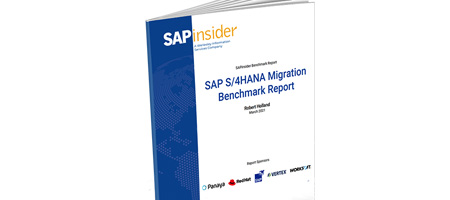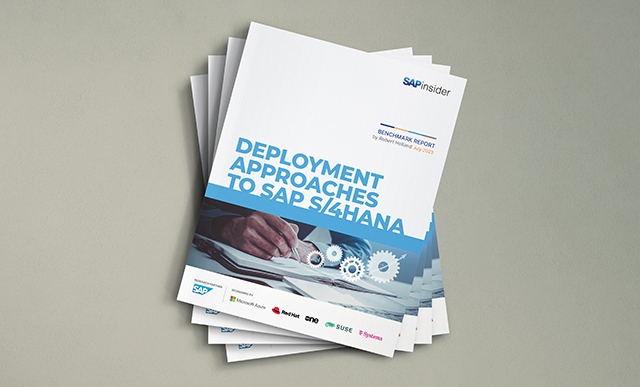Getting 20 SAP Systems into the Cloud in Record Time
In 2019, hydraulics expert HANSA-FLEX AG took on two major projects in an effort to adapt its IT structure to meet its organizational and customer needs. With 160,000 customers around the world, and 4,500 employees working in over 450 locations in more than 40 countries, HANSA-FLEX realized that its single, self-operated, local datacenter at its headquarters in Bremen was lopsided. Working with Microsoft Partner Network member, Arvato Systems, the company updated its SAP systems and database to SAP HANA, achieving the fastest cloud migration to-date. Today, the family owned business is one of Germany’s largest midsize companies using SAP on Microsoft Azure. It was the first time the company used Azure NetApp Files to run performance-intensive and latency-sensitive workloads in the cloud.
The challenge: Switching from old technologies to establish new ubiquitous digital structures
As one of Europe’s leading systems providers in fluid technology, HANSA-FLEX AG is an important partner for many manufacturing brands around the world—from multinational corporations to local workshops. The Bremen-based family business keeps its customers’ systems running with its comprehensive hydraulics service. But back in 2019, the company’s IT department was challenged with keeping its own systems running. HANSA-FLEX AG’s CFO, Christian-Hans Bültemeier, describes one of risk management’s worst-case scenarios: “All it would’ve taken was for a digger to accidentally cut the power line to our headquarters and the entire HANSA-FLEX world would have ground to a halt. Given our increasingly global structure, we knew we were going to have to say goodbye to our on-premises solution—we’d already decided that as part of our long-term digitalization strategy. Whichever way we looked at it, a cloud service was just vastly superior to our datacenter in terms of security and flexibility.” At the same time, Bültemeier wanted to upgrade to the next version of SAP to remain competitive in Europe and become more agile in Asia. To implement two projects of this scale simultaneously, Head of IT, Jürgen Kaemena, enlisted the help of the experts at Arvato Systems. In the course of a workshop, Microsoft Azure was identified as the ideal cloud platform. “We found Microsoft’s strategic focus and market penetration in combination with Arvato’s service portfolio and support very compelling,” Kaemena says. At the end of September 2019, the 30 person project team began the planning phase, setting a goal to have all key SAP systems running in the cloud within three months. These included the 10 terabyte IBM Db2 database that stored 80,000 material master datasets for HANSA-FLEX’s more than 450 locations. That left a six-week window to complete the migration itself by year’s end. “That was very ambitious, very ambitious indeed,” Bültemeier says. “But we were sure that we could do it as long as our IT professionals worked closely with their counterparts at Arvato and Microsoft.”
The solution: Implementing a comprehensive digitalization strategy
“We had IBM Db2 and SAP HANA—two completely different database systems,” says Markus Krenn from Arvato Systems. “While executing the migration, we had to transform, reorganize, and compress the data, without being able to predict how much memory the database would ultimately occupy. Azure NetApp Files gave us a great deal of flexibility.” Launched by Microsoft in May 2019, Azure NetApp Files is widely used as the underlying shared file storage service in various scenarios, such as migrating a high-performance computing infrastructure or enterprise web applications. HANSA-FLEX was the first company in Germany to implement Azure NetApp Files as part of a purely SAP project. Once migrated, the database took up just one-third of the space it had before. “Without Azure NetApp Files, we would’ve had to provide up to five premium SSDs to meet the storage needs—only then to discover we needed significantly fewer than we thought,” Krenn says. “The scalability of Azure NetApp Files made backing up the data much simpler and meant we didn’t have to juggle multiple drives. Expanding storage is easy, but reducing it, as we did for HANSA-FLEX, is a bit trickier.”
Using Microsoft technologies, Kaemena’s team and Arvato Systems achieved an impressively fast migration from on-premises SAP to Azure. “We concluded the entire project in the time it normally takes to order and take delivery of SAP hardware; 20 SAP systems are now running in Azure,” Krenn says. In January 2020, when HANSA-FLEX employees returned to work after the holidays, the only signs that the migration had taken place were a couple of windows asking for information to sign in. Hans-Joachim Dietrich, Interim Project Manager for SAP S/4HANA at HANSA-FLEX, says that the migration made the biggest impact on the IT department: “The journey to the cloud came as a relief to our administrators, since they will no longer have to attend to the system at 3:00 in the morning. Then there’s the fact that we migrated 20 business-critical SAP systems to the Azure cloud platform in just three months, which greatly enhanced the IT department’s image within the company.”
Even if it is still too early to measure the adoption of Azure in terms of savings, Bültemeier says he can clearly measure it in benefits. “The cloud services are considerably more flexible and more easily scalable. We used to have to buy storage capacity two or three years in advance, and now we can easily add more as and when we need it. We’re charged only for what we actually use.”
Migrating its SAP systems to the Azure cloud platform made HANSA-FLEX AG a pioneer among Germany’s SMEs. “Within Microsoft’s professionally managed environment, we can run superb security and backup scenarios that would have been simply beyond us as a family-owned SME. This is a major advantage that employees involved in day-to-day operations aren’t even aware of,” Bültemeier says.
In the future, HANSA-FLEX wants to further digitalize its services, which will involve using a range of Microsoft IoT products, including Microsoft HoloLens—the mixed reality headset will pave the way for remote support solutions. Bültemeier hopes that projects like these will put a glint in the eyes of his colleagues: “Whenever you see that glint, you know you’ve found a solution that meets the exact needs of the departments, which in turn drives the business further.”






